Designing Your Ideal Tiny Home Oasis
Envisioning your ideal tiny home oasis begins with the perfect blend of functionality and style, so you create a space that truly feels like home. Exploring tiny house design ideas allows you to personalize your environment while maximizing limited space. Whether you're using tiny home blueprints or opting for one of the best tiny house kits, you can tailor your living areas with uniqueness and practicality in mind.
Consider incorporating versatile tiny house interior designs that utilize multi-functional furniture and clever storage solutions, providing comfort without sacrificing aesthetics. Delve into the world of tiny home construction plans to ensure your abode is suited for your lifestyle, whether it's grounded or a tiny house on wheels. This thoughtful preparation paves the way for an affordable tiny home that meets your needs without overwhelming your budget.
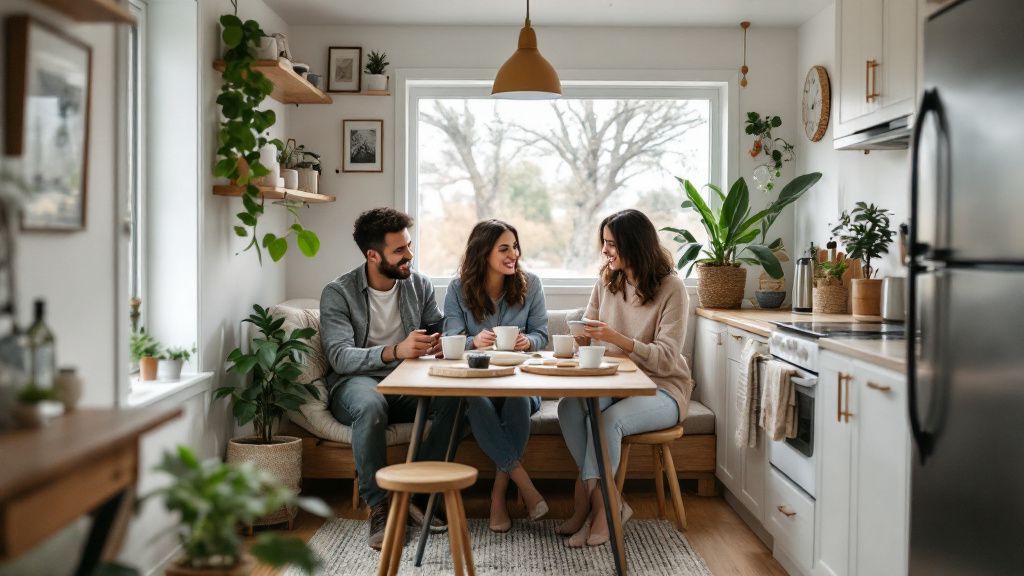
Why Choose a Tiny Home for Your Lifestyle
Choosing a tiny home can significantly enhance your lifestyle by providing flexibility and financial freedom. They offer a simplified way of living, reducing your environmental footprint while allowing you to focus on what truly matters. This transition to tiny house living presents an opportunity to eliminate clutter and live more intentionally, fitting your essential needs into an impeccably designed, compact space.
When comparing traditional housing vs. affordable tiny homes, it's clear that tiny homes require less financial commitment. Without the burden of a large mortgage, you can enjoy more disposable income for experiences and savings. Additionally, with tiny house interior designs, you can customize every inch, making the most of smaller spaces without compromising on comfort or style.
Embracing tiny home designs allows you to adapt your dwelling to your evolving needs, whether stationary or mobile. Consider exploring tiny house on wheels plans to add a mobile aspect to your lifestyle, offering the freedom to explore new locales without losing the comforts of home. By investing time in understanding tiny home construction plans, you ensure your tiny abode aligns perfectly with your personal goals and vision, providing a unique and rewarding living experience.
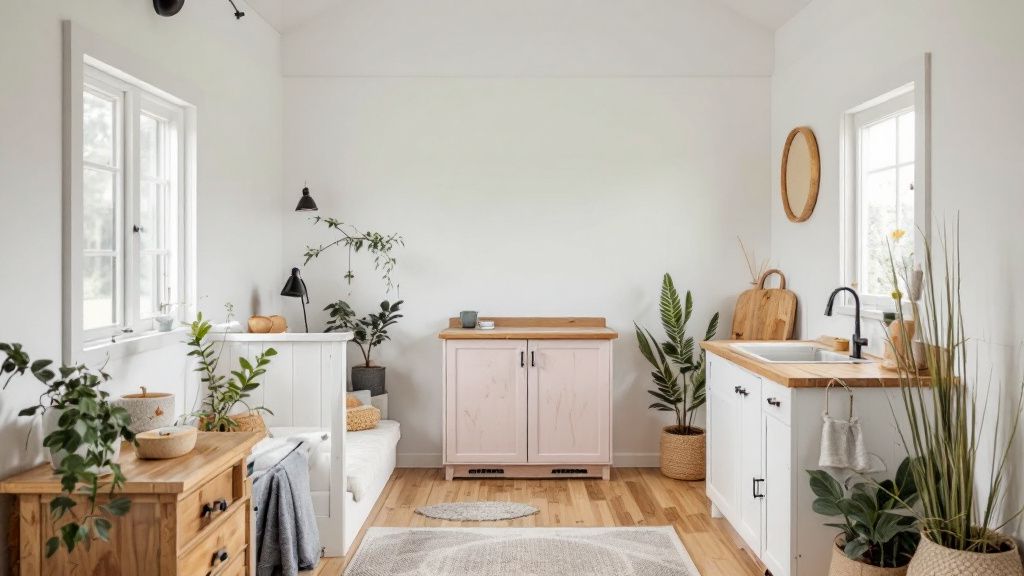
Understanding the Different Types of Tiny Homes
Tiny homes encompass a variety of types, each offering unique benefits and catering to different lifestyles. From tiny houses on wheels to stationary micro-dwellings, there's a design to match your preferences and requirements. When considering a tiny house on wheels, mobility becomes a significant advantage. These are perfect for those who relish travel, promising the adventure of exploring new places while maintaining the comfort of home.
To accommodate stationary lovers, foundation-based tiny homes provide a more traditional living experience without compromising on the perks of a compact space. These options often use tiny home blueprints that maximize efficiency and blend seamlessly with their surroundings, offering diverse architectural styles and sustainable materials. Affordable tiny homes of this nature are ideal for those who prefer a permanent abode with the simplicity and eco-friendliness that comes with downsizing.
Looking into tiny house design ideas through the prism of flexibility, prefab tiny homes and best tiny house kits offer the fastest path to achieving your dream space. These kits simplify the building process, making it easier for you to understand how to build a tiny house efficiently. By customizing tiny house interior designs, you can personalize these ready-to-assemble homes to cater to your specific needs, ensuring a living space that truly feels like your own.
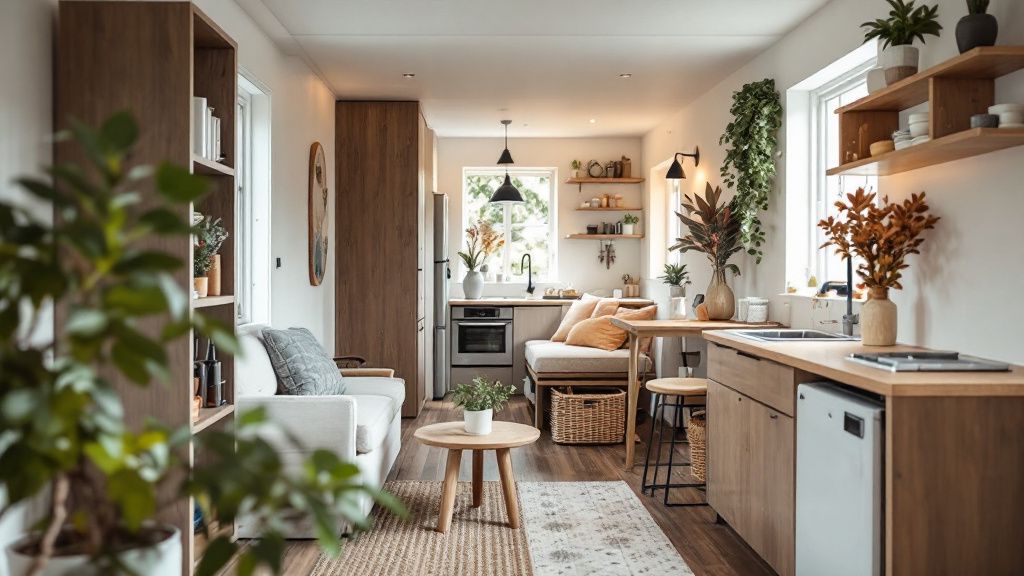
Key Elements of Efficient Tiny Home Designs
Efficient tiny home designs rely on a thoughtful layout that maximizes every square inch, ensuring your living space is both functional and comfortable. Key elements include multi-functional furniture, such as fold-out beds or extendable tables, which allow you to easily switch between activities without clutter. Storage solutions integrated into walls, floors, or stairs can help maintain order while freeing up valuable space.
Natural light is another important aspect of efficient tiny house interior designs. Large windows and strategically placed skylights create an open, airy atmosphere, making your home feel larger than it is. To further enhance your tiny house, consider embracing open floor plans that promote flow between areas, adding brightness and a sense of unity throughout your dwelling.
To make the most of your tiny home blueprints, try prioritizing vertical space by incorporating lofted areas for sleeping or storage. This strategy not only adds functionality but also increases your floor area for living or entertainment purposes. With these practical tips in mind, you can create a tiny home that meets your needs without sacrificing style or comfort. The result is a personalized residence that supports your unique lifestyle in a compact yet efficient design.
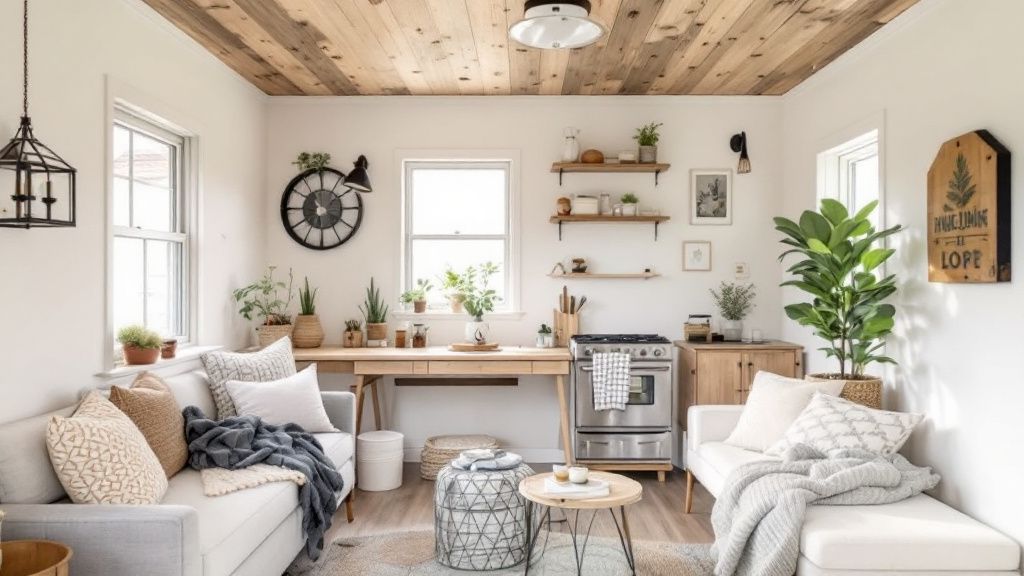
Top Tiny Home Plans for Every Budget
Exploring top tiny home plans reveals that there's a design for every budget, whether you're aiming for luxurious comfort or economical functionality. Affordable tiny homes often utilize basic yet efficient layouts, ensuring the essentials are met without excessive costs. These plans can incorporate simple tiny home blueprints that optimize space and materials, offering a cost-effective route to achieving your tiny house dreams.
For mid-range budgets, adding creative tiny house design ideas can elevate your space significantly. Incorporating stylish tiny house interior designs and eco-friendly materials can enhance the aesthetic appeal while remaining budget-conscious. According to recent studies, energy-efficient homes have been shown to reduce long-term utility costs, making this approach both economical and environmentally sound.
High-end tiny homes often feature custom details and innovative solutions, blending elegance with practicality. These homes frequently utilize the best tiny house kits, offering cutting-edge design elements and high-quality finishes. By investing in upscale tiny home construction plans, you can create a dwelling that perfectly aligns with your personal taste and sustainable living goals, resulting in a harmonious balance of luxury and efficiency tailored to your lifestyle.
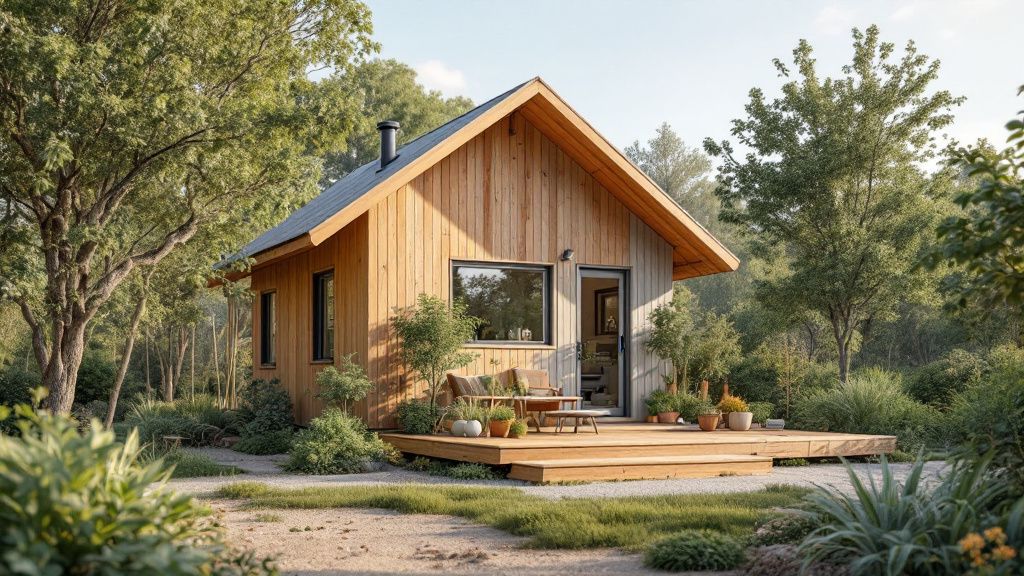
The Importance of Sustainable Building Materials
The growing emphasis on sustainable building materials in tiny home construction is a critical response to environmental concerns. By choosing eco-friendly resources, you contribute to reduced waste and energy consumption, fostering a more balanced ecosystem. The utilization of materials such as reclaimed wood, bamboo, and recycled metal has gained popularity in tiny house design ideas, offering durability and aesthetic appeal without compromising the planet's health.
Tracing its evolution from the Industrial Revolution, sustainable architecture has shifted significantly. Initially, construction heavily relied on readily available raw materials, leading to resource depletion. Modern efforts focus on reversing this trend, seeking sustainable options that minimize impact. Incorporating these into tiny home designs supports efficient tiny house interior designs, while also preserving natural resources. As awareness grows, embracing green materials in tiny home blueprints becomes a vital aspect of responsible tiny house living.
When you plan how to build a tiny house, integrating sustainable materials aligns with both practical needs and ethical considerations. For example, using energy-efficient insulation and low-VOC paints enhances air quality and reduces long-term energy costs. This approach not only meets the needs of affordable tiny homes but also aligns with the broader goals of reducing the carbon footprint. The movement towards building eco-conscious homes represents a blending of innovation and tradition, paying homage to historical techniques while looking towards a sustainable future.
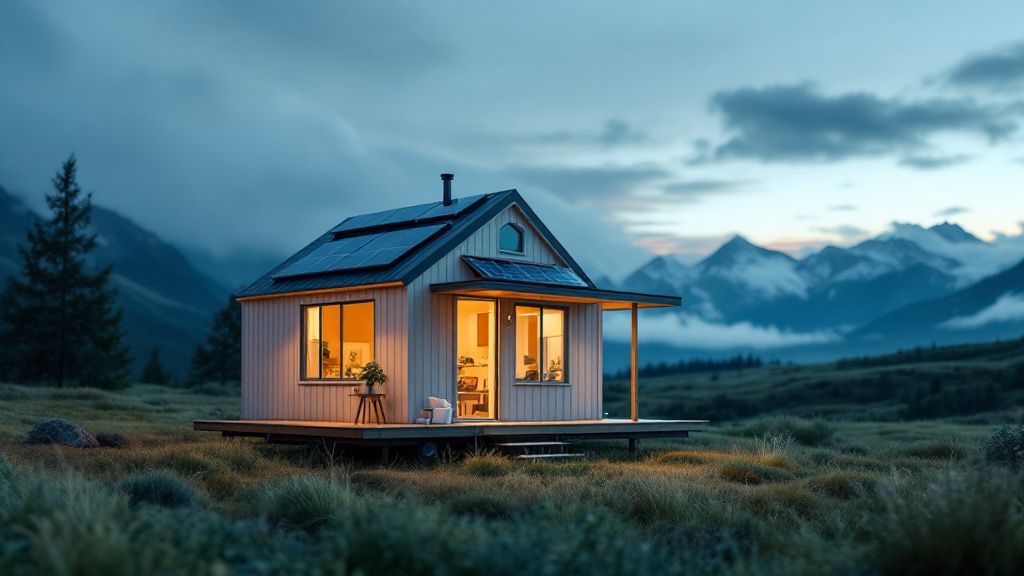
Innovative Technologies for Tiny Home Living
Innovative technologies are transforming tiny home living by adding efficiency and modern conveniences to compact spaces. Smart home systems allow you to control lighting, temperature, and security remotely, making tiny house living both comfortable and high-tech. Solar panels and energy-efficient appliances contribute to sustainable energy use, aligning with tiny home construction plans aimed at minimizing environmental impact.
While many believe that a high-tech approach might increase costs, there’s a strong case for long-term savings through energy reduction and enhanced home management. By integrating these advanced technologies into your tiny home designs, you not only optimize space but also enhance functionality and resource efficiency. This holistic approach complements the goals of affordable tiny homes by reducing operational expenses over time.
Water-saving innovations, such as rainwater collection systems and efficient plumbing fixtures, are essential in optimizing resource use. These technologies ensure your tiny house interior designs incorporate sustainability without compromising on comfort. By adopting such innovations, you align with the future-oriented nature of tiny home blueprints, ensuring that your dwelling remains relevant and cost-effective amidst evolving environmental standards. Embracing these advances offers a balanced synthesis of convenience and responsibility, shifting the paradigm of what tiny house living can achieve.
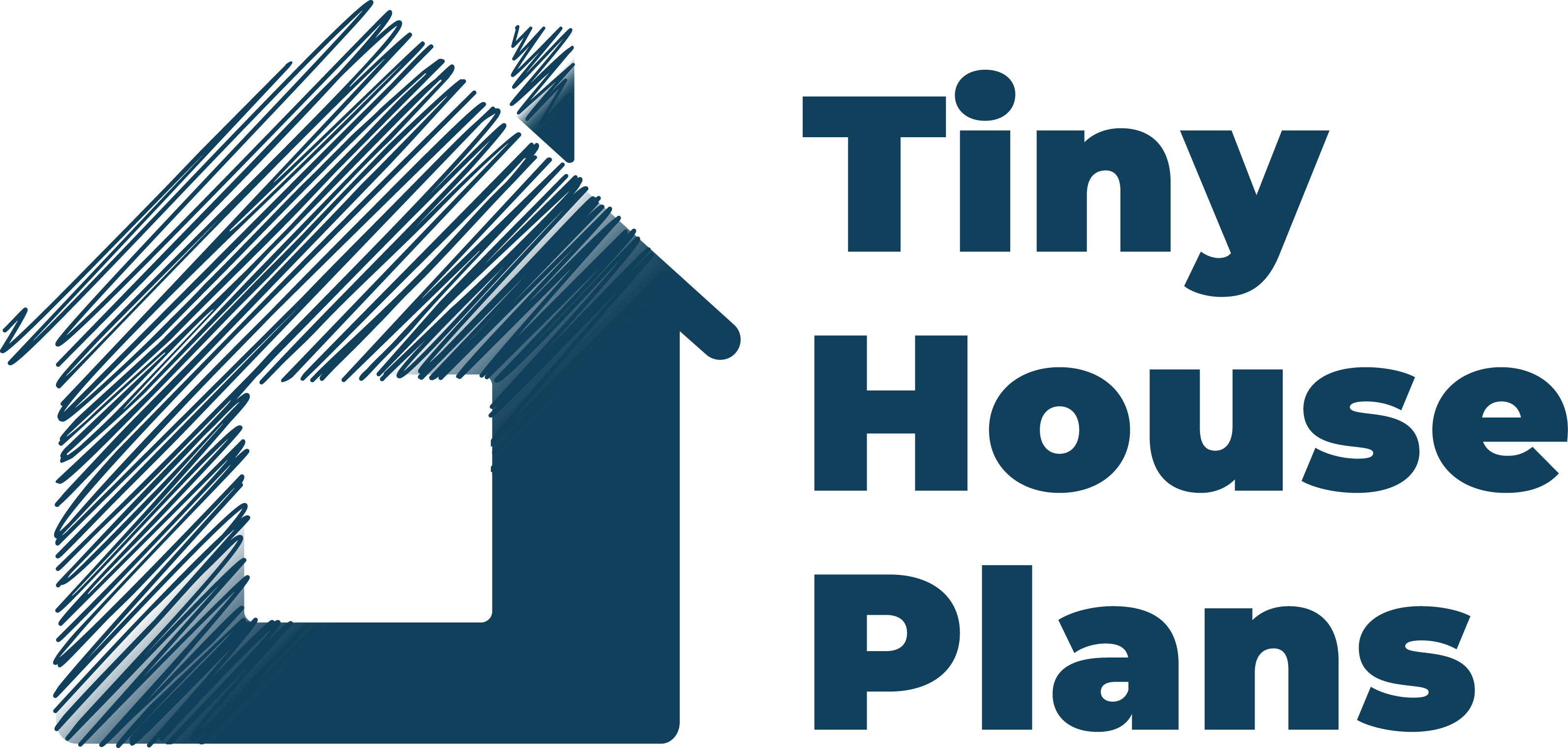




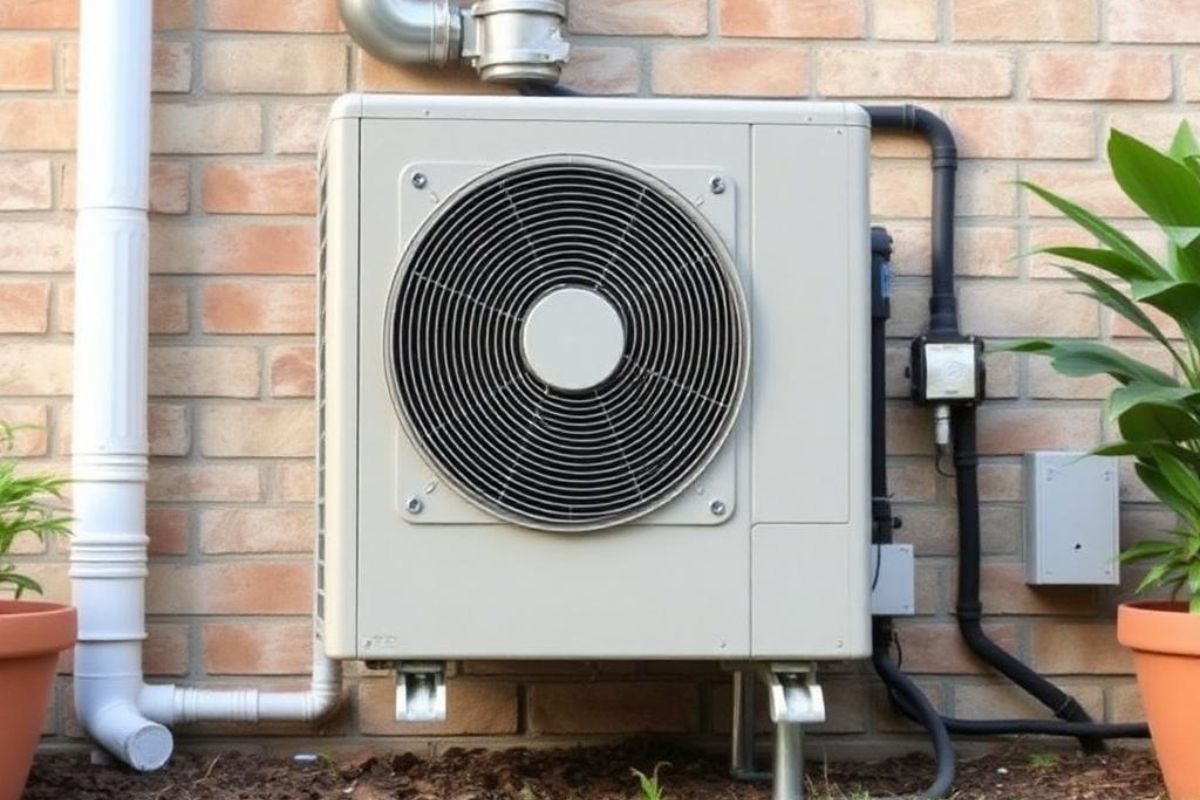
Share: